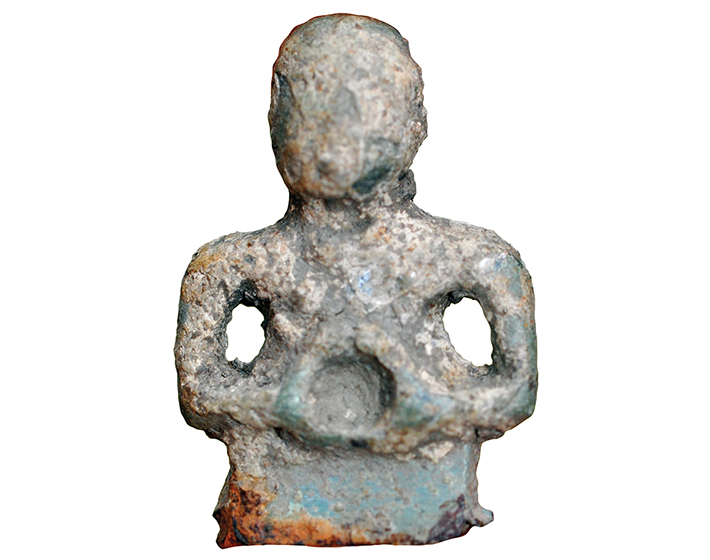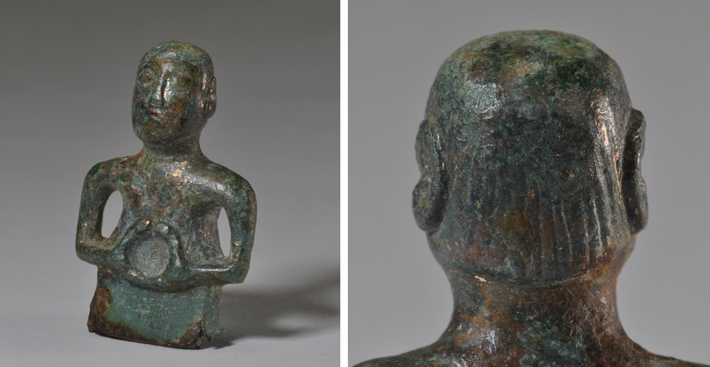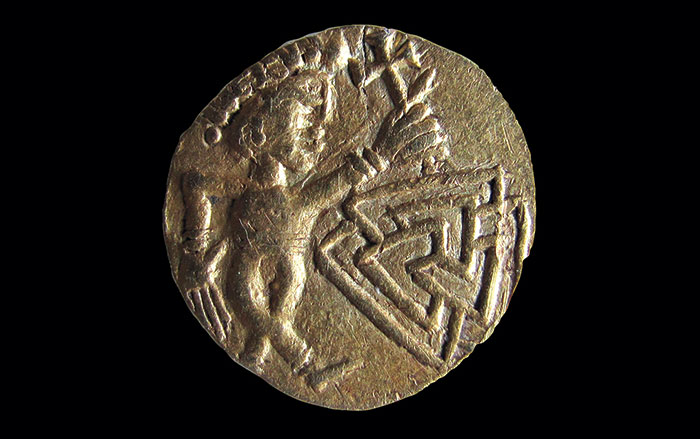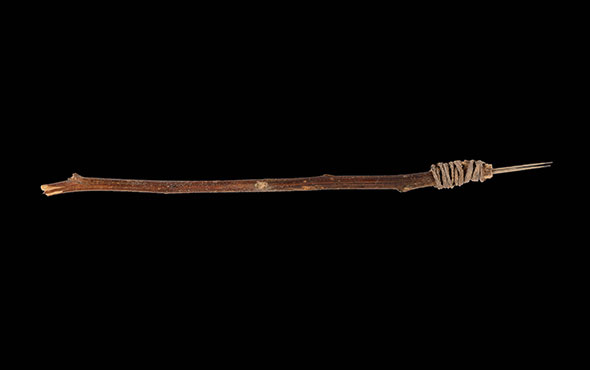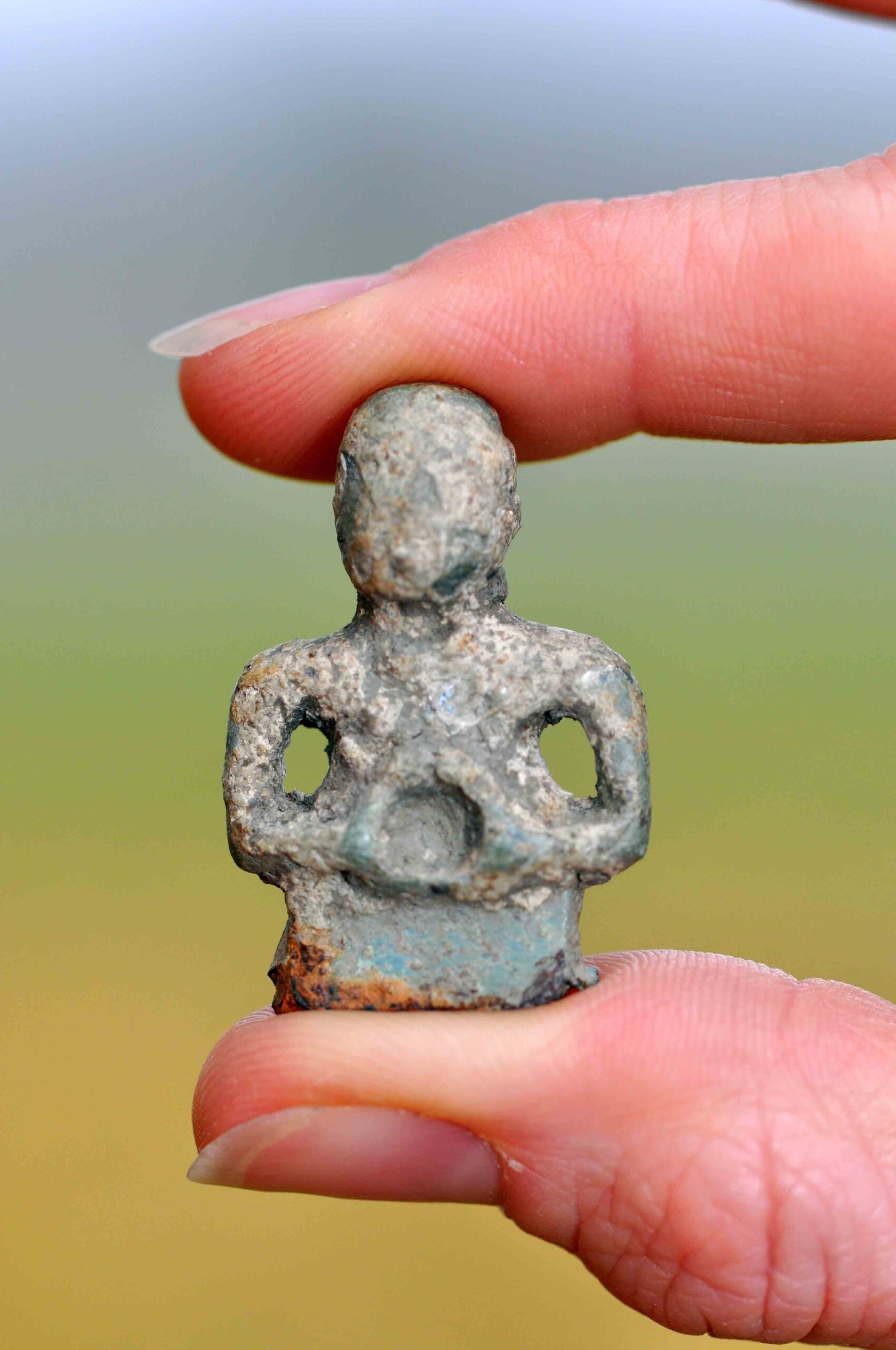
The most intriguing find from recent excavations at the seventeenth-century manor house known as the Wimpole Estate in Cambridgeshire, England, is a second-century A.D. copper alloy figurine of Cernunnos, the Celtic god of fertility, animals, and the underworld. Cernunnos is often shown, as he is here, in a squatting position with a circular torc, or neck ring, in his hands. The figurine formed “part of a utilitarian object, possibly the handle of a Roman spatula for clearing wax tablets,” says archaeologist Paddy Lambert of Oxford Archaeology East. After it broke, he says, the Cernunnos figurine was likely buried near a shrine.


